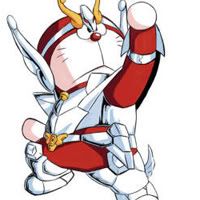White Paper (Collections Beauty)
Monday, November 23, 2009















For the fourth time now, the Javits Convention Center is playing host to the New York Comic-Con. An increasingly important part of the convention, though it actually precedes when the floor is open to attendees, is the annual Graphic Novel conference organized by ICv2, which describes its mission as tracking the various developments taking place “inside pop culture” And each year, the the highlight of the conference is the presentation of the ICv2 White Paper, an exhaustive look at just how prominent, popular and profitable graphic novels of all types that are available in North America in English actually are.
As in the previous years, the report was presented by ICv2's founder and president, Milton Griepp. He began by talking about what exactly his company means when they talk about graphic novels. Specifically, the statistics assembled cover original stories that only appear in graphic novel from, collections of comics that have been previously printed in newspaper or published as single monthly issues, and finally, translations – primarily, but by far not exclusively, of Japanese comics. Overall, these three types of books brought in US$395 million in sales in 2008, up from about US$375 million last year. For comparison, in 2001, the first year that ICv2 started tracking these figures, graphic novel sales amounted to only about US$75 million. In general, sales of graphic novels in bookstores still increase at a faster pace than in comic shops, while sales to libraries are increasing even faster. And even as the overall shape of the growth curve has began to flatten, the positive effects of the popularity of the Dark Knight motion picture and the upcoming Watchmen movie have made graphic novels of all kinds more prominent than they ever have been. In Griepp's words, a situation of this kind comes around once in a generation – and these two films present the greatest opportunity for publishers since manga first really made its entrance in America to introduce new readers to graphic novels of all kinds, and convert those who are only familiar with Batman and Watchmen to the wide variety of graphic novels that are out there .
Turning his attention to manga specifically, however, Griepp pointed out that in 2008, North American publishers released a total of 1372 individual volumes, down from 2007's 1513 – a drop of about 9%. And ICv2 projects that throughout 2009, there will be only 1224 volumes brought out. Perhaps more important is the fact that the actual sales figures of manga are down some 17%, to about $175 million, and are now at the level last seen in 2005. In his opinion, this decrease is driven by at least four factors. The first is the overall effect of the economic recession that the U.S. is currently in. The second is the lower visibility that anime properties that could potentially drive manga sales have, as television and cable networks, in particular Cartoon Network and Adult Swim, cut the number of anime on their schedules, sometimes in favor of non-animated original shows. Another is the changing graphic novel order policy of the Borders chain of bookstores, which Griepp speculated may have something to do with the departure of Borders' graphic novel buyer, Kurt Hassler, who left the company in November 2007 to join manga publisher Yen Press. And finally, he pointed to the simple effect that the Twilight series of novels, and the film based on them, had in siphoning off the audience of female readers that could be expected to be manga customers.
Nonetheless, if taken as a category (alongside superhero, fiction/realistic, humor, and adult-oriented graphic novels), manga still has the largest actual number volumes that are being released, and of the 9,600 individual volumes that are currently on the Diamond Comic Distributors back list, about 43% are manga. However, both Diamond and individual retailers are becoming more active in ceasing to keep manga and comic volumes on the back list but available for ordering as long as they have in the past.
In general, the white paper finds that smaller manga publishers that only have a limited number of properties, likely with no television or marketing tie-ins, are the ones that will be hit the hardest by the current downturn. For mid-size companies, the future may lie in diversification into non-manga lines. And across the universe of North American manga publishers, concentration on the few titles that are still selling well will be crucial. One bright spot, however, is the continuing market penetration of manga into mass retailers (Wal-Mart and other department stores), and specialty retailers such as Hot Topic. No matter what happens to manga as a whole, Viz Media's Naruto remains in a class of its own, a very positive force that is still growing in influence, and attracting new readers with every volume.
.For the first time since ICv2 has begun to produce this white paper, they also engaged in an extensive survey of comic and manga retailers, to document their perceptions of just who is buying these books. Particularly interesting among the results of the survey is the differing perception of the gender of graphic novel purchasers. Most retailers, whether at comic shops or in book stores, still believe that the majority of those who buy graphic novels are male. On the other hand, particularly in libraries, some 65% of those surveyed report an even split in who is borrowing both traditional graphic novels and manga. And as far as audience ages go, the bookshops seem to cater more to teenage readers, and the libraries, overwhelmingly so. Another component of the survey asked retailers to talk whether they expect sales of graphic novels to decrease this year. 20% report decreases, and only 14% are expecting further slow-downs as the year goes on.
The overall feeling about the present and future of graphic novels, among both retailers and librarians, is cautious optimism. Naruto in particular is seen more and more as a mass property that has broken out of being thought of as merely a comic or that can be compared meaningfully to other comics. And the general state of the economy will have the effect of accelerating the general pace of change among graphic novel publishers, and make them more open to trying new things.






















